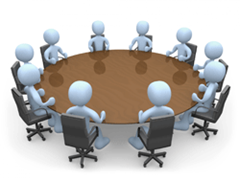Team Meetings' Content and Process
Team meetings are an essential part of any successful organization. They provide an opportunity for team members to collaborate, share ideas, and align their efforts towards common goals. Dale Carnegie, the renowned author and speaker, has offered valuable insights and techniques to make team meetings more effective and productive.
The first step in conducting an effective team meeting is to establish a clear agenda. The agenda should be shared with all team members in advance to allow them to prepare and come ready to contribute. The agenda should also include specific goals and objectives for the meeting, so that team members know what is expected of them.
During the meeting, it is important to encourage participation from all team members. This can be achieved by using open-ended questions and active listening techniques to create a supportive and inclusive environment. It is also important to recognize and acknowledge contributions from team members, and to provide constructive feedback when necessary.
To ensure that the meeting stays on track and productive, it can be helpful to designate a facilitator or leader. The facilitator can guide the conversation, keep the meeting focused on the agenda, and manage any conflicts or issues that may arise.
Another key element of an effective team meeting is to set clear action items and follow-up tasks. This ensures that the ideas and insights generated during the meeting are translated into actionable steps, and that progress is made towards achieving the goals and objectives set out in the agenda.
Finally, it is important to evaluate the effectiveness of the meeting and identify areas for improvement. This can be done through anonymous feedback surveys or by soliciting feedback from individual team members. By continuously improving the process and format of team meetings, organizations can ensure that they remain productive, engaging, and impactful.
In conclusion, team meetings are a critical component of successful organizations. By following Dale Carnegie's insights and techniques, teams can conduct more effective and productive meetings. By establishing clear agendas, encouraging participation, designating a facilitator, setting clear action items, and evaluating effectiveness, teams can collaborate more effectively, align their efforts towards common goals, and ultimately achieve greater success.
Team Meetings' Content and Process
There are two aspects of every team meeting—Content and Process:
 • Content—Relates to the topics that will be addressed at the meeting. Those topics can take a variety of forms that can be remembered by the acronym RAMPS:
• Content—Relates to the topics that will be addressed at the meeting. Those topics can take a variety of forms that can be remembered by the acronym RAMPS:Reporting status Announcing information Making decisions Planning Solving problems
• Process—Describes how the meeting should be conducted. This aspect is often
overlooked in favor of an emphasis on content. However, the process will often have a greater bearing on the success or failure of a meeting.
Team Meeting Process
The following process will serve most meetings well. It begins with the team targeting the purpose and outcomes of the meeting. This is an essential step because it directs the entire meeting and ensures that all of the team members are working toward the same goals. The second step involves reviewing the agenda and timing for the meeting. This activity should be oriented toward ensuring that the agenda supports the meeting purpose and outcomes.Next, the team should make any appropriate announcements and status reports. Once this is complete, the team is ready to address the heart of the meeting, which may involve making decisions, planning for an upcoming event, or problem solving.
Before concluding, it is important to evaluate the meeting based on the purpose and outcomes that were previously established. Finally, team members need to agree on actions to be taken as a result of the meeting.









0 comments:
Post a Comment